|
For foster parents, creating a home that is trauma-informed is essential to helping children heal and grow. Trauma-informed care means being aware of the potential impact of trauma on a child’s development and actively working to build trust, safety, and stability. As a foster parent, understanding how to create an environment that fosters healing can help your family thrive. What Makes a Home Trauma-Informed? A home that is trauma-informed prioritizes physical and emotional safety. This means creating deescalation strategies when emotions are running high, establishing boundaries that are consistently enforced, avoiding triggers, and encouraging self-care practices like relaxation techniques or mindful activities like yoga. It also involves setting up routines so children know what to expect each day. Establishing consistent rules and expectations helps kids feel secure in their new environment because it gives them something familiar to cling on to during times of great change. It's important for foster families to understand the impact of traumatic experiences on kids' behavior. Trauma can manifest itself in many ways including aggression, hyperactivity, or withdrawal from social situations. Learning how to recognize signs of distress will help you be better prepared to respond appropriately in difficult situations. Creating a Safe Space in Your Home When creating a safe space in your home, work on minimizing external triggers that may set off negative emotions in your foster child. This includes avoiding overly stimulating environments like crowded malls or loud restaurants as often as possible, providing plenty of quiet places like bedrooms or isolated alcoves within the house where your foster child can retreat for comfort and privacy if feeling overwhelmed. Additionally, make sure all family members are aware of boundaries—both physical (such as no hitting) and emotional (such as no teasing). When everyone understands these boundaries, it’s easier for your foster child to feel safe within your home. Building Trust with Your Foster Child Trust plays an important role in developing relationships with your foster child. Focus on building trust through small gestures such as reading stories together at night, having regular meals as a family, or playing games together that promote bonding and connection. Get creative with activities like nature hikes or art projects! When kids feel safe enough to express themselves openly and honestly - without fear of judgement - they learn that they can depend on you as their caregiver even during the most challenging moments. Creating a trauma-informed home takes time but it’s worth the effort; by providing safety, consistency, structure and love you’re giving your foster child the tools they need to heal after experiencing trauma and disruption in their lives. Building trusting relationships between yourself and your foster child will take time but it will also bring tremendous rewards; by creating a supportive environment where everyone feels respected while cultivating healthy ways of expressing emotions you’ll provide your family with the foundation necessary for growth no matter how long they stay with you! More from Foster Mama
So you’ve completed the foster care process and you’re now waiting on your first foster placement. You may be feeling a mix of emotions, from excitement and anticipation to fear and anxiety. I remember feeling so frustrated knowing so many kids were in foster care yet we hadn't received a call immediately after being licensed (I knew then it was a bit of a selfish view since my concerns were about my timeline and my needs, but the feelings were still real). Whatever it is that you’re feeling, here are some tips to help you stay positive while you wait.
Continue Learning about Foster Care While a lot of people think that once they become a licensed foster parent, their education is complete; that couldn’t be farther from the truth! There is always something new to learn when it comes to foster care and parenting in general. Continue reading books or articles written by experts in the field. Put together your first-week check-list. Create a loose plan for bonding. Taking the time to continue learning and planning will help prepare you for when your first foster placement arrives. Learn More about Trauma-Informed Care and Trust-Based Relational Intervention Fostering involves taking in children who have experienced trauma, which means that it is essential to have an understanding of trauma-informed care. While you wait for your first placement, take the time to familiarize yourself with what it means to be trauma-informed and ways to help kids who have experience trauma. One of the most well-respected support strategies for children who have experienced trauma is Trust Based Regional Intervention (TBRI). Seek out articles, watch documentaries or take classes related to trauma-informed parenting and TBRI so that when your foster child arrives, you are prepared with the necessary knowledge and skillset. Stay Connected with the Foster Care Community You’re not alone in this journey. Take the time to connect with other foster parents in your area. This can be done through online forums or even local meetups. Not only will connecting with other families help reduce feelings of loneliness during this time, but it will also give you an opportunity to gain insight from others who have gone through what you are about to experience. Take Care of Yourself (and Your Family) Waiting on a child can cause stress and anxiety, so it's important to take care of yourself during this period. Go enjoy walks in the park or get exercise in other ways. If you already have children in the home, do a favorite activity to keep everyone busy. If you're fostering with a spouse or partner, discuss your feelings with them (do not try to handle it on your own) and ask them to share their feelings about the upcoming changes. And as difficult as it may be, try to get rest! If needed, seek therapy to help you handle your anxiety and anticipation; a counselor can give you tools to cope with the stress (which will come in handy when your foster child arrives). The waiting period before getting your first foster placement can feel like an eternity but following these simple steps can lead to a smoother transition into becoming a foster parent. From educating yourself on trauma-based behaviors to taking care of yourself, these tips will help ensure that once the day finally arrives, everything will go as smoothly as possible! Good luck! 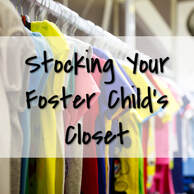 As a foster parent, you may feel a bit overwhelmed when it comes to stocking your foster child’s closet. Most foster kids don’t come to their foster homes with many clothes, so it can be daunting to figure out how to build their wardrobe -- especially when you're already dealing with paperwork, visits, and adjustments. Fortunately, there are several resources available that can help you get the job done without spending a fortune. Here are our top tips for stocking a foster child's closet. Foster Closets One of the best resources for foster families is local foster closets. These organizations provide clothing, toys, books, and other items at no cost to families in need. Some of these organizations will even come directly to your home with donations! You can find out if there is a local foster closet in your area by asking your agency, other foster parents in your community or searching online. Asking Friends and Community Another great way to stock your foster child’s closet is by asking friends and family for donations. Most people are more than willing to help if they know what is needed, so don’t be afraid to reach out and ask! While you can post your request to your followers on social media, you can also post it in local parent groups in your community. Many people have clothes their kids have outgrown stored away that they'd love someone to take off their hands. Thrift Stores Thrift stores are great for kids clothes. You can often find school uniforms, jackets, or other gently used clothes here at a low price. Your kids may even enjoy going to the thrift store and finding items they like. Consignment Stores & Facebook Marketplace You can often find higher quality gently-used clothes at kid consignment stores and Facebook Marketplace. For consignment stores, check out:
Facebook Marketplace also gives you the opportunity to find items for sale in your community. You can easily find large "lots" of clothes in certain sizes. Stocking a foster child's closet can feel like an overwhelming task but it doesn't have to be! While these are all great sources, you will still likely have to buy some items new. Hopefully these suggestions help you fill in gaps as much as possible to stretch your dollars further. From Foster Closets, to asking friends and family members for donations, to thrift and consignment shops, there are plenty of options available that will help you stock your foster child's closet quickly and on budget! Good luck!
Let's be clear, preparing for a foster placement of any age requires much more than buying a bunch of stuff. But for those who are past their training and education and are ready for the shopping, here are my suggestions for ages 2-4. (This post contains affiliate links, but these are all products I love!)
1. Toddler Bed - Kids this age can easily climb out of cribs, making them unsafe. On the flipside, standard height beds may be a hazard because kids this age fall out of bed easily. This is why toddler beds were created, no doubt. Don't forget the mattress if you don't have a crib mattress handy. 2. Plates/Cups/Utensils - There are many options out there but honestly I say go basic unless/until you know they need something specific. For plates, these are simple, BPA-free, and dishwasher and microwave safe. On cups, if kids are developmentally on target, they should be able to drink out of an open cup like this one. In case they're not, it may be good to have a closed-top cup on hand like this one; these are also great for car rides. While some kids this age will be totally ready to handle standard forks and spoons, it's probably good to have a set of toddler sized utensils, like these, on hand for those still learning. 3. Potty Seat - My suggestion for potty seats is to keep it simple. It's personal preference, but I don't necessarily want something bulky in my bathroom that would be hard to tuck away when a non-toddler needed to use that bathroom. This one worked great for us while our guys were potty training. 4. Pull Ups - This age is fairly likely to still need diapers, at minimum for over-night. Have a good gender-neutral option like these (2-3T here and 4-5T here) on hand to cover you for at least the first few weeks. 5. Night Lights - Kids this age are likely to not be big fans of the dark, so a night light or two like these in their room would likely be helpful. You can also put one in the hallway in case they wake up in the middle of the night. 6. Books - Our favorites for this age group are: - There's A Bear in My Chair - Bear on a Bike - My First Book of Emotions - Rodzilla - Leap Frog Learning Books 7. Magnetic Tiles - These tiles can keep kids, and maybe even you, entertained for hours. I would dare to say they are this generation's legos. And you don't need the name brand version to get good quality; I've used both the expensive version and a lower-cost version and I didn't notice one bit of difference. 8. Animal Figurines - These animal figurines are durable, fun and great for pretend play. We've had them for over two years, and those that haven't been left behind at Grandma's house, are still in great shape and something our kids love to play with. 9. Cars - These mini cars will spark any wheel-lovers imagination. Add a piece of cardboard to make a ramp and they'll be amazed at what these can do. 10. A few stuffed animals and a soft blankie - Kids this age love something soft to cuddle with. Get Elmo, or other recognizable and/or cute stuffed animals. And atoddler-sized blanket like this one and you'll be set.
This age group is fun as they are generally more independent than babies and toddlers and maybe just maybe have less attitude than pre-teens or teens :). After you have the bed and a dresser, here are some things we had on hand that we highly recommend. (This post contains affiliate links but are all products I love!)
4. Marble Run -- You'll probably have to be the one to build it, at least the first few times, but the kids will love putting the marbles at the top and watching them make their way down over and over again. And somehow, it's pretty fun for you too!
8. Puzzles — This is a great bonding activity as you work together. It also provides a great distraction and doesn't involve screen time!
9. Walkie Talkies — This is another one that has the ability to keep kids entertained for hours. Bonus if you have more than one kid in the house (otherwise you'll need to be on the other end). 10. Books -- We make family reading time a daily activity and it has helped so much with bonding. Some of our favorites for this age group are:
|
AuthorI'm a foster mom, bio mom, working mom, special needs mom, busy mom. I'm also married to my high school sweetheart, I'm a proud 23-year childhood cancer survivor, and I'm passionate about serving my community. More from FosterMamaArchives
March 2023
Categories
All
|

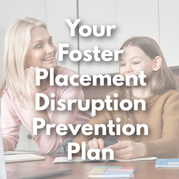


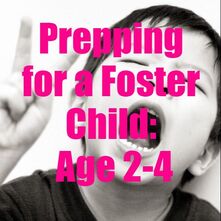
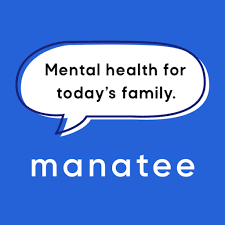



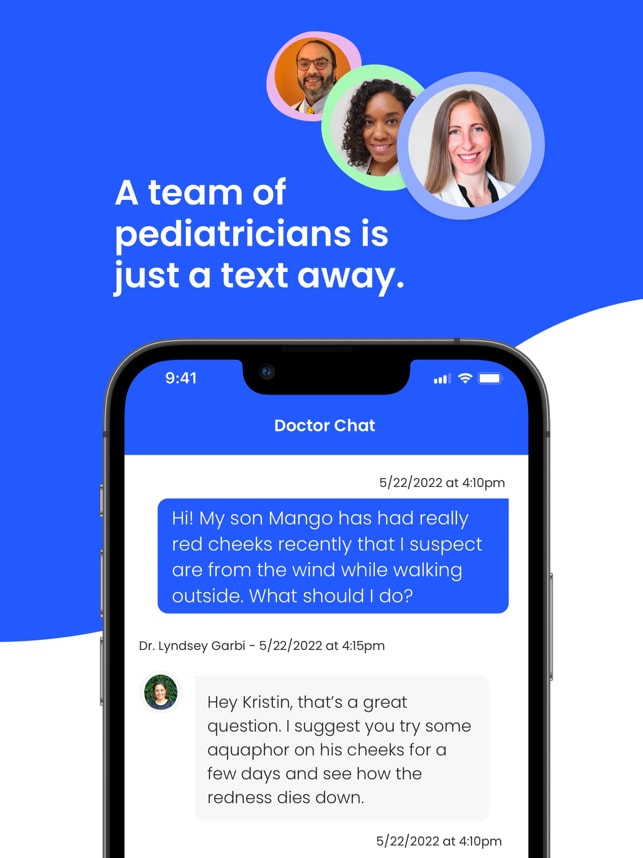
 RSS Feed
RSS Feed